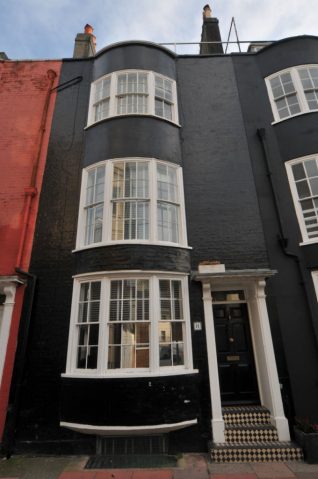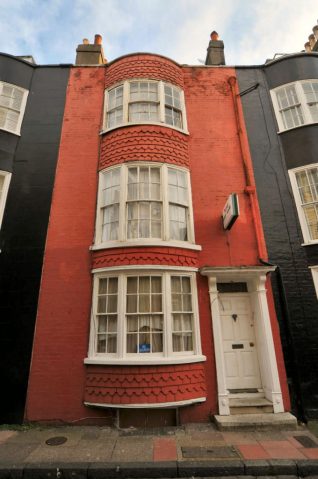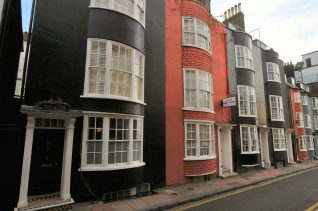
Charles Street

Charles Street
Cottages built c1840
These are some of the oldest cottages on the East Cliff. Their bow windows which are unusually tall and narrow, are also some of the earliest in the area. Dating from very early in the 19th century, the terraced cottages are three-storeys with a basement; there is one window each storey. Although the materials used in each cottage vary, the design is identical
Stucco and brickwork
Painted stucco and brickwork predominates, but mathematical tiles are visible around the windows of number 11. Each has a flat-arched entrance with overlight framed by fluted Tuscan pilasters, from which spring console brackets, supporting a modillioned cornice porch.

Charles Street

Charles Street




Comments about this page
I query the date -1840- accompanying the images. I thought this area of Brighton, the Cliff Furlong of the Little Laine, was the first area outside the Old Town that developed resort housing. I recall Dr Sue Berry, the foremost Brighton historian [and like me really a geographer!] thinking these streets were 1770s-1780s constructions.
I would agree, their construction is much earlier. Charles Street is shown fully developed in the 1815 book ‘Epitome of Brighton’ by R. Sicklemore. The map in the book is not dated but it could be earlier than 1815 (it won’t be later!) and shows Brighton developed eastwards to Lower Rock Gardens. Also I had a mate who owned a Guest House in New Steine - he told me the building was dated around 1760.
Judging by an entry elsewhere on this website Geoff (just search for ‘Charles Street’), you may well be right: It is stated that “The St James’s Street area, formerly known as the Little Laine, was the first area outside of the Old Town of Brighton to be developed. Housing appeared there from the 1770s and good examples can still be seen from this period in Manchester Street and Charles Street.” I wonder if this includes Nos 9-12 Charles Street? Regards Alan
I would concur absolutely that these buildings are much earlier than 1840. Budgen’s map of 1788 shows much of Charles Street was built by then, while Yeakell & Gardner’s 1779 map indicates only a library to the east of the Steyne. It would therefore be highly likely the development took place in the interim years. Regards, Andy
Add a comment about this page